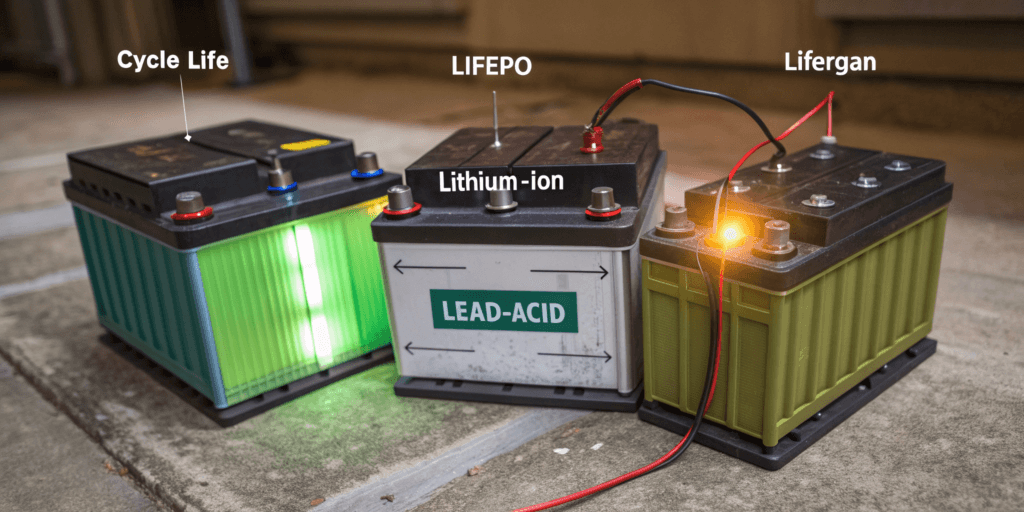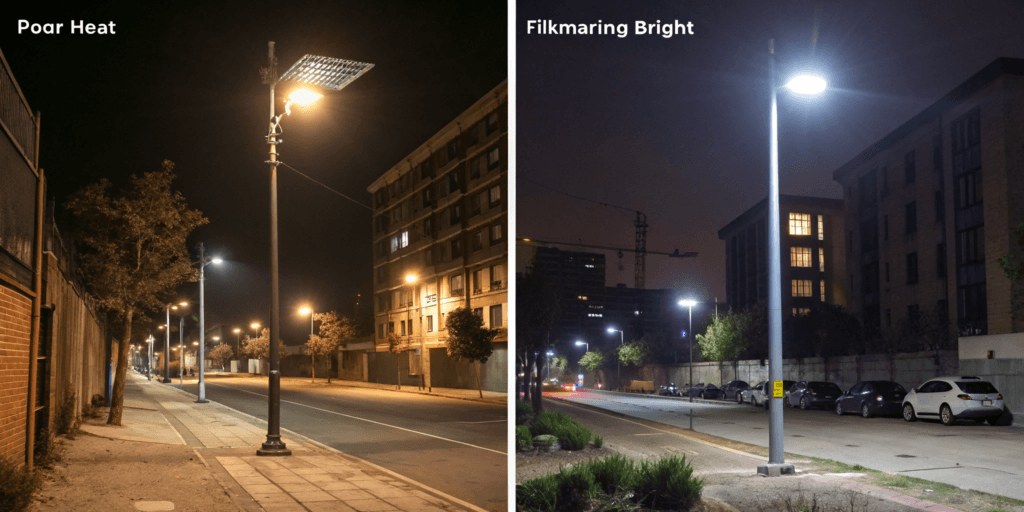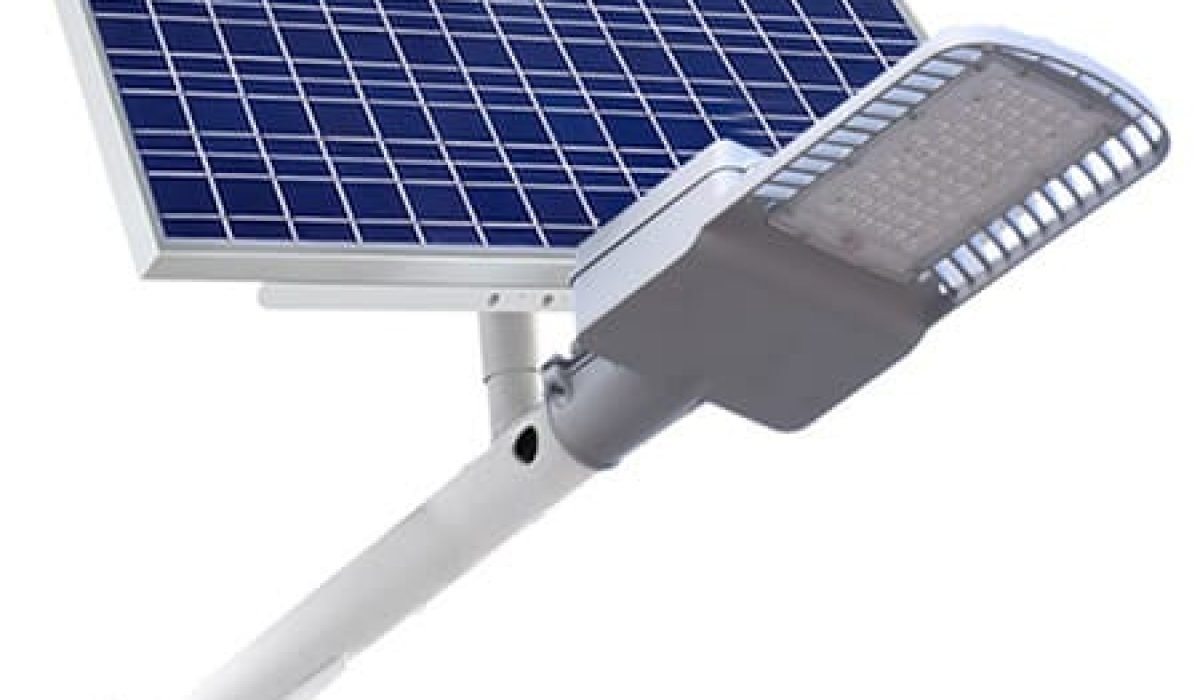Everyone wants value from their investment—but when it comes to solar street lights, durability is the key to long-term ROI. Yet many fail far earlier than promised, often due to poor component choices or lack of integration. So, what separates a solar light that lasts 2 years from one that thrives for over a decade?
True 10+ year durability comes from smart engineering, high-grade materials, and weather-resilient systems—all working in harmony. In this guide, I’ll show you exactly what to look for to ensure your All-in-One Solar Light goes the distance.
Core Components That Define Longevity in All-in-One Solar Lights
A solar light is only as strong as its weakest part. For lasting performance, every component—solar panel, battery, LED, housing, and controller—must be premium and well-matched. Let’s explore each one in detail.
High-Efficiency, Long-Life Solar Panels
The quality of the solar panel determines how much energy is collected—and how long it will stay effective.
- Monocrystalline Solar Panels: 20%+ efficiency and proven long-term stability.
- Tempered Glass Covering: Scratch-resistant, impact-proof, UV-protected.
- Anti-UV Encapsulation: Prevents yellowing and degradation under intense sunlight.
- Lifespan: 20–25 years if using A-grade cells and proper encapsulation.
Cheap panels often degrade quickly in hot or humid environments, drastically cutting system efficiency.
Advanced Battery Technology with Long Cycle Life

Battery life is usually the first thing to fail in cheap solar lights. Here’s what separates the best from the rest:
| Battery Type | Cycle Life | Typical Lifespan |
|---|---|---|
| LiFePO₄ (LFP) | 2000–3000+ | 8–12 years |
| Lithium-Ion (Generic) | 800–1000 | 2–4 years |
| Lead-Acid | 300–500 | 1–2 years |
- BMS Features: Intelligent Battery Management protects against overcharge, deep discharge, and high temperatures.
- Temperature Tolerance: LiFePO₄ can operate in -20°C to 60°C with high stability.
- Result: Consistent night-to-night lighting performance, even in extreme climates.
Industrial-Grade LED Modules
LEDs are long-lasting—but only when built with thermal efficiency in mind.
- ≥160 lm/W High-Efficiency LEDs: Brighter output with less energy.
- Low Thermal Decay: Less than 20% lumen loss over 50,000–100,000 hours.
- Metal-Core PCBs: Better heat transfer, preventing LED failure.
- Lifespan: ~10–15 years with proper thermal regulation.
If LEDs overheat due to poor housing or no heat sink, expect early dimming and failures.
Durable Housing and Structural Design
You can't expect a light to survive 10 years outdoors with plastic or thin sheet metal casings.
- Die-Cast Aluminum Alloy: Rust-resistant, impact-proof, and thermally stable.
- UV-Stabilized Polycarbonate Lens: Won’t yellow or crack under constant sun.
- IP66+ Protection: Dust-tight, water jet resistant—ideal for storms, rain, and sand.
- Wind Resistance: Structural integrity tested to withstand ≥120 km/h winds.
Good housing isn’t just protection—it’s essential for thermal performance and longevity.
Smart Control & Thermal Management Systems

Control systems extend life by adjusting how the light behaves based on real-world conditions.
- Adaptive Brightness: Dimming during low-battery or low-traffic times reduces stress on LEDs and batteries.
- Motion Sensing: Saves power, especially in low-activity areas.
- Temperature Monitoring: Reduces output or shuts off temporarily under extreme conditions.
- Energy Optimization: Ensures full-night operation without over-draining batteries.
These features prevent overuse and extend every component’s working life.
Certifications and Testing That Prove a 10+ Year Lifespan
Without verified testing, durability is just a marketing claim. Look for:
| Standard | Purpose |
|---|---|
| CE / RoHS | Product safety and environmental compliance |
| ISO 9001 | Quality control in manufacturing |
| IEC 61215 / 61730 | Panel and safety performance |
| UV & Salt Spray Testing | Simulates coastal and desert climates |
| Real-World Field Testing | Validates long-term claims under actual environmental conditions |
If the manufacturer can’t show test results, be cautious.
Common Reasons Low-Quality Solar Lights Fail Early
Here’s what we often see from low-grade products:
- Low-quality batteries: Fast capacity loss and early failure.
- Plastic housings: Cracks under sun, water ingress.
- No thermal design: Leads to overheating and LED burnout.
- Poor solar panels: Low yield, poor UV protection.
- Component mismatch: Undersized battery for panel output, or weak LED drivers.
Durability isn’t just about parts—it’s about how well they work together.
Case Study Highlights: Long-Term Durability in Action
Middle East Desert Deployment
- Issue: UV degradation + 50°C daytime heat.
- Solution: Monocrystalline panels with UV glass + ventilated aluminum housing.
- Result: Still running strong after 8 years.
Coastal Port Lighting
- Issue: Salt-laden air, typhoon risk.
- Solution: Marine-grade coatings + reinforced mounts.
- Result: No corrosion after 10+ monsoon seasons.
Northern Europe Winter Pathways
- Issue: -20°C nights and snow accumulation.
- Solution: Battery heating pads + snow-shedding panel design.
- Result: Stable winter lighting for over 6 years (and counting).
Conclusion
A solar light that lasts over 10 years isn’t a lucky product—it’s the result of thoughtful design, premium materials, and rigorous testing. Cutting corners on any component can reduce performance and lifespan dramatically.
Invest once—benefit for over a decade. Let us help you design a future-proof solar lighting system tailored to your climate and application.
Frequently Asked Questions (FAQ)
Can solar lights really last over a decade?
Yes, if built with quality components—especially LiFePO₄ batteries, monocrystalline panels, and proper housing—they can last 10–15 years.
What battery type lasts the longest?
LiFePO₄ (Lithium Iron Phosphate) offers the best cycle life (2000–3000+), temperature tolerance, and safety.
How does extreme weather affect the lifespan?
Without thermal protection, heat degrades batteries and LEDs; cold impacts battery discharge. Durable systems adapt to both.
What maintenance is required over 10 years?
Minimal—clean the panel surface 1–2 times per year and inspect for physical damage. Battery or LED replacement may be needed after 8–10 years.
Can I upgrade battery or LED modules later on?
Yes. With modular designs like ours at Hitech China, components can be replaced or upgraded individually.


